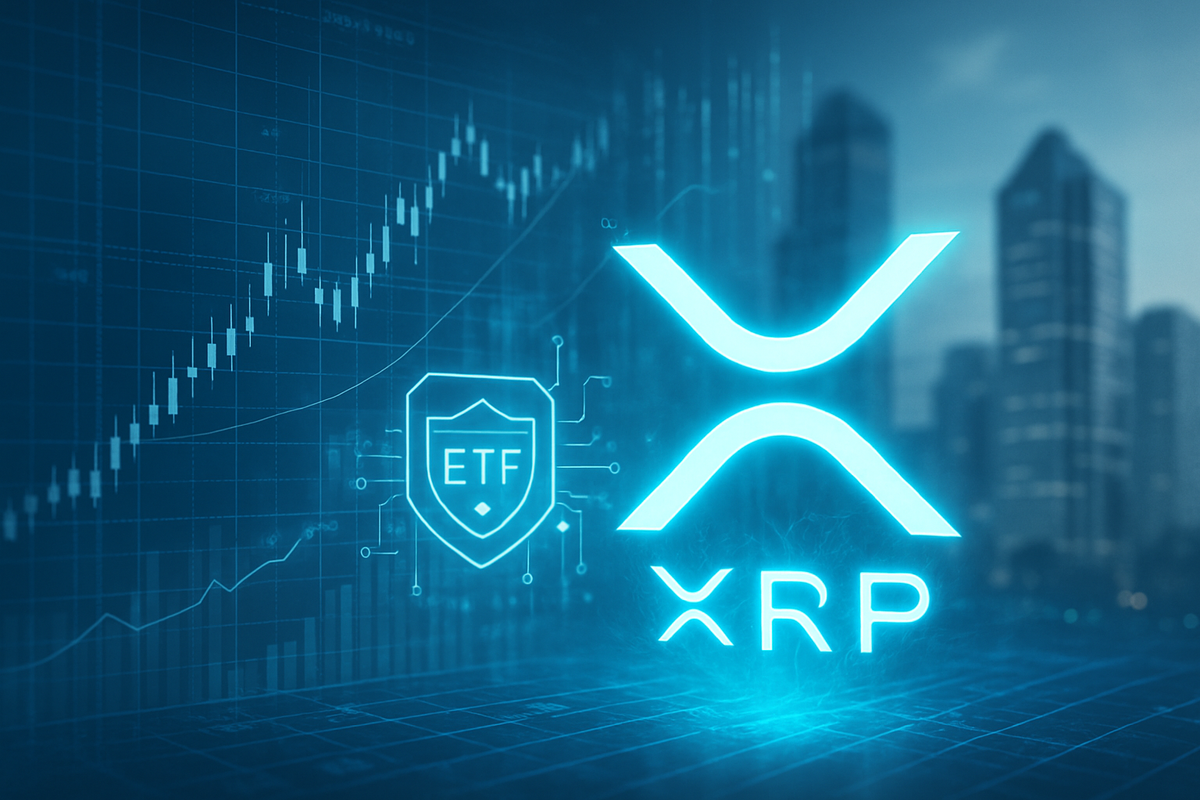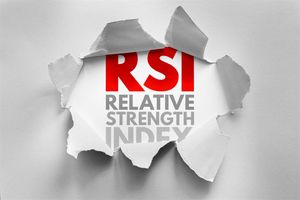
The financial world is abuzz following the groundbreaking launch of the first U.S. spot XRP Exchange-Traded Fund (ETF), marking a pivotal moment in the ongoing convergence of traditional finance and the burgeoning digital asset market. This development, spearheaded by the REX-Osprey XRP ETF (XRPR), which debuted on September 18, 2025, on the Cboe exchange, has sent ripples of excitement and anticipation throughout the market. With several other major financial institutions awaiting imminent regulatory decisions on their own spot XRP ETF applications, the landscape for institutional investment in cryptocurrencies is undergoing a rapid and irreversible transformation.
The arrival of spot XRP ETFs is widely perceived as a powerful legitimizing force for XRP, signaling its maturation into a mainstream investable asset. This move is expected to unlock a torrent of institutional capital, providing a regulated and accessible conduit for traditional investors to gain exposure to the digital asset. The immediate implications point to enhanced liquidity, increased market stability, and a significant boost in confidence for the broader cryptocurrency ecosystem, echoing the transformative impact seen with the approval of Bitcoin and Ethereum ETFs.
A Watershed Moment: Details of the XRP ETF Debut
The journey to this watershed moment has been paved with significant regulatory and market developments. The REX-Osprey XRP ETF (XRPR) made its historic debut on September 18, 2025, listing on the Cboe exchange. The product garnered substantial attention, recording nearly $38 million in first-day trading volume, a figure that positioned it as the highest-volume ETF launch of 2025. Despite an initial minor dip from its opening price of $25.83, XRPR quickly recovered, demonstrating robust early demand and investor confidence. This successful launch underscores a growing appetite within traditional finance for diversified digital asset exposure.
The timeline leading to this event is crucial. A significant catalyst was the U.S. Securities and Exchange Commission's (SEC) August 2025 settlement with Ripple Labs (XRP), which provided much-needed regulatory clarity by classifying XRP as a non-security for secondary market transactions. This legal resolution significantly de-risked XRP in the eyes of institutional investors and regulators. Furthermore, the SEC's recent adoption of new universal listing standards for crypto spot ETFs has streamlined the approval process, accelerating the pace of digital asset product innovation. In addition to the spot ETF, a futures-based product, the Teucrium 2x Long Daily XRP ETF (XXRP), had previously gone live, attracting over $300 million in net flows, indicating a strong existing demand for leveraged XRP exposure.
Currently, several other prominent financial institutions, including Franklin Templeton, Invesco (NYSE: IVZ), Bitwise, Grayscale, 21Shares, WisdomTree (NYSE: WT), Canary, and CoinShares (STO: CS), have spot XRP ETF applications under final review by the SEC. Rulings for these applications are anticipated between October 18 and October 25, 2025, promising a potential wave of further approvals that could dramatically reshape the market. The initial market reactions have been overwhelmingly positive, with XRP's price surging by over 25% in July 2025 on the back of ETF exposure prospects and regulatory clarity. As of early October 2025, XRP was trading near multi-year highs around $3.03-$3.04, reflecting widespread market optimism fueled by the current and prospective ETF launches. Large institutional holders, often referred to as "whales," have also been observed accumulating significant amounts of XRP in anticipation of these decisions, further signaling a bullish outlook.
Companies Poised to Win and Lose in the New XRP Era
The launch of spot XRP ETFs ushers in a new competitive landscape, creating clear winners and losers across both the cryptocurrency and traditional financial sectors. Ripple Labs (XRP) stands as a monumental winner. The regulatory clarity provided by the SEC settlement and the subsequent ETF approvals validate years of effort and investment, cementing XRP's position as a legitimate and investable asset. This institutional embrace will likely drive increased utility for Ripple's enterprise solutions that leverage XRP, potentially boosting demand for the underlying asset and strengthening its ecosystem.
Asset managers who successfully launch spot XRP ETFs are also poised for significant gains. Firms like REX-Osprey, and potentially Franklin Templeton, Invesco (NYSE: IVZ), Bitwise, Grayscale, 21Shares, WisdomTree (NYSE: WT), Canary, and CoinShares (STO: CS), will capture substantial management fees from the billions of dollars expected to flow into these products. Their early entry and market share will be crucial for long-term success. Cryptocurrency exchanges, such as Coinbase (NASDAQ: COIN) and Kraken, which serve as custodians and provide trading infrastructure for these ETFs, will benefit from increased trading volumes, custody fees, and enhanced legitimacy as key players in the institutional crypto market. Similarly, traditional financial institutions that integrate these ETFs into their brokerage and wealth management platforms will see new revenue streams and opportunities to meet client demand for digital asset exposure.
On the other hand, companies that fail to adapt or embrace this new wave of digital asset integration may find themselves at a disadvantage. Traditional investment vehicles that do not offer crypto exposure might lose market share as investors seek diversified portfolios that include digital assets. Furthermore, smaller, unregulated crypto platforms that rely heavily on retail trading might face increased competition from regulated ETF products, which offer a more secure and accessible entry point for mainstream investors. While not a direct "loss," some existing XRP holders who prefer direct ownership might see a shift in market dynamics as institutional interest dominates price action, potentially leading to different volatility patterns. The increased institutionalization could also lead to higher compliance costs for all market participants, a burden that smaller entities might struggle to bear.
Broader Significance and Market Transformation
The introduction of spot XRP ETFs transcends mere product innovation; it signifies a profound shift in how traditional finance views and interacts with digital assets. This event fits squarely into the broader industry trend of institutionalizing cryptocurrencies, following in the footsteps of Bitcoin and Ethereum ETF approvals. It underscores a growing recognition of digital assets as a legitimate and essential component of a diversified investment portfolio, moving beyond the speculative fringes into mainstream financial strategies. The approval of these ETFs marks an irreversible step towards the deeper integration of traditional financial markets (TradFi) with decentralized finance (DeFi), accelerating the convergence of these two powerful domains.
The potential ripple effects on competitors and partners are substantial. The success of XRP ETFs could pave the way for similar products based on other altcoins, creating a "domino effect" where regulatory clarity for one asset opens doors for others. This could incentivize other blockchain projects to seek similar regulatory pathways and institutional adoption, fostering a more mature and compliant digital asset ecosystem. Custodial service providers, trading platforms, and data analytics firms specializing in digital assets are likely to see increased demand for their services as more institutions enter the space. Conversely, traditional financial products that lack digital asset exposure may face increased pressure to innovate or risk becoming less attractive to a new generation of investors.
From a regulatory standpoint, the SEC's actions regarding XRP ETFs, particularly after the Ripple settlement and the implementation of new universal listing standards for commodity-based trust shares, establish a clearer and more predictable regulatory framework for digital assets. This signals a maturation of the regulatory landscape, encouraging further product development and reducing uncertainty for market participants. Historically, the launch of gold ETFs revolutionized commodity investing, and more recently, Bitcoin ETFs have transformed crypto access. The XRP ETF stands as a powerful precedent, demonstrating that regulatory hurdles can be overcome, and that digital assets can be packaged into familiar, regulated financial products. This move validates the underlying technology and the potential of blockchain-based assets to reshape global financial infrastructure.
What Comes Next: Navigating the Future of XRP and Digital Assets
The launch of the first U.S. spot XRP ETF is not an endpoint but a significant new beginning, setting the stage for a dynamic period of evolution in both short-term and long-term market dynamics. In the short term, the market is bracing for the imminent decisions from the SEC regarding the remaining spot XRP ETF applications, expected between October 18 and October 25, 2025. A wave of further approvals could trigger another significant price surge for XRP, potentially pushing it to new all-time highs as a fresh influx of institutional capital enters the market. Investors should closely monitor these regulatory announcements and the subsequent trading volumes in the newly approved ETFs.
Looking further ahead, the long-term possibilities are vast. The success of XRP ETFs could spur innovation in other digital asset products, including ETFs for other prominent altcoins, and potentially more complex structured products. This could lead to a more diversified and robust digital asset market accessible through traditional investment channels. Potential strategic pivots for existing financial institutions might include developing in-house digital asset expertise, expanding their crypto offerings, or forging partnerships with established blockchain companies. For blockchain and crypto firms, the challenge will be to maintain their innovative edge while navigating an increasingly regulated environment.
Market opportunities will emerge for infrastructure providers, such as custodians, security firms, and compliance solutions, as institutional demand for secure and regulated digital asset services grows. Conversely, challenges may arise from increased market scrutiny, potential volatility as institutional flows dictate price action, and the ongoing need for regulatory clarity across different jurisdictions. Potential scenarios range from a rapid acceleration of digital asset adoption across all financial sectors to a more measured, gradual integration. Investors should be prepared for increased market sophistication and the potential for new types of market participants to influence price discovery.
A Comprehensive Wrap-Up: The Dawn of a New Financial Era
The launch of the first U.S. spot XRP ETF represents a monumental stride in the journey of digital assets from niche technology to mainstream financial instruments. The key takeaway is clear: institutional adoption of cryptocurrencies is no longer a theoretical concept but a tangible reality, with XRP now firmly embedded within the traditional financial framework. This event, driven by regulatory clarity and the increasing demand for diversified digital asset exposure, is fundamentally reshaping the investment landscape.
Moving forward, the market is poised for continued growth and maturation. The success of XRP ETFs will likely serve as a blueprint for other altcoins seeking similar institutional pathways, accelerating the overall integration of digital assets into global finance. Investors should assess the market with a forward-looking perspective, recognizing that the dynamics of digital asset valuation and trading are evolving rapidly. The increased institutional participation is expected to bring greater liquidity and potentially reduced volatility over the long term, but also a new set of influences on price action.
Final thoughts on significance and lasting impact point to a future where digital assets are seamlessly integrated into traditional portfolios, offering new avenues for diversification and growth. This isn't just about XRP; it's about the broader legitimization of blockchain technology and its potential to revolutionize financial services. What investors should watch for in the coming months are the outcomes of the remaining XRP ETF applications, the subsequent capital inflows, and any further regulatory developments that could open doors for other digital assets. This is an exciting time for finance, marking the dawn of a truly integrated digital and traditional financial era.
This content is intended for informational purposes only and is not financial advice

















